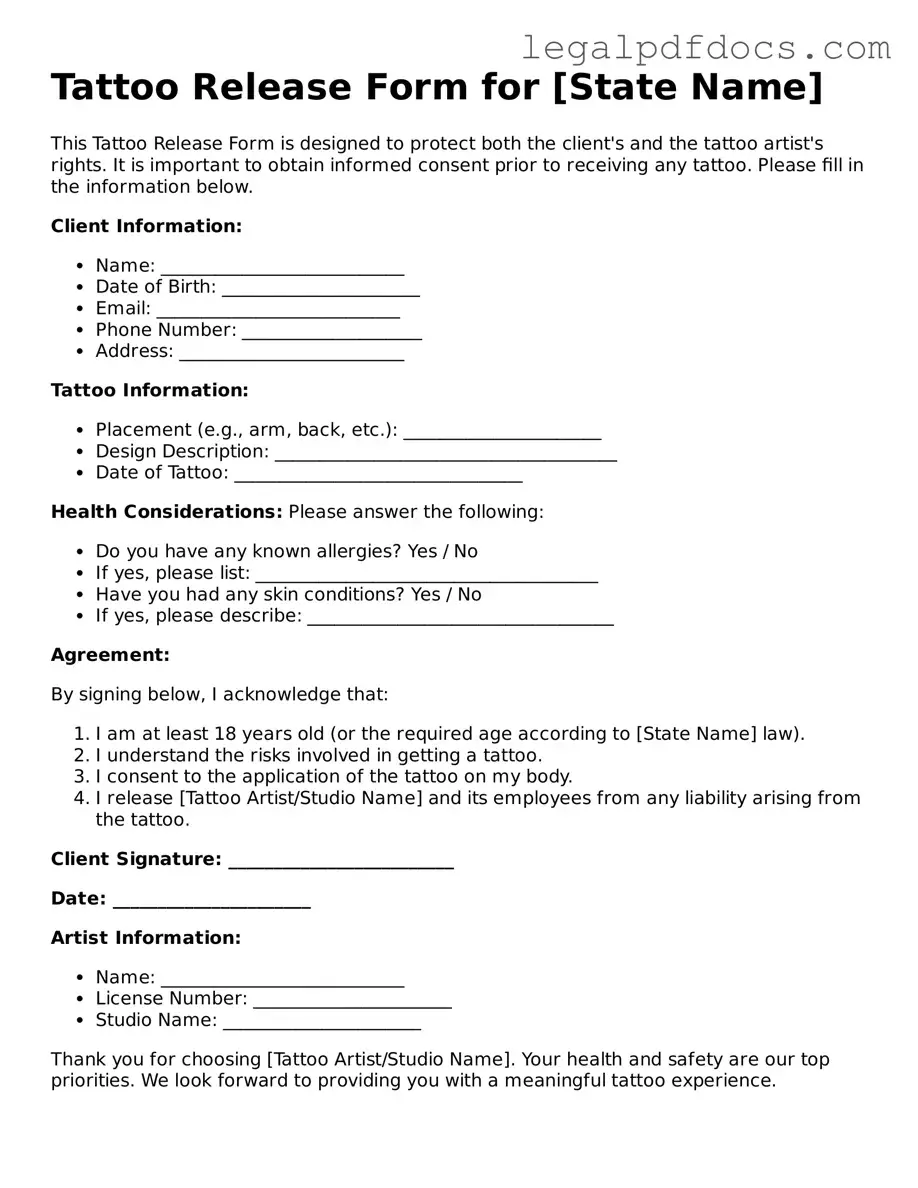Tattoo Release forms play a crucial role in the tattooing process, serving as a vital tool for both artists and clients. These forms ensure that individuals fully understand the nature of the tattoo procedure and the potential risks involved. By signing a Tattoo Release form, clients grant permission for the artist to create the tattoo while acknowledging their consent to the process. This document typically includes essential information such as the client's personal details, a description of the tattoo, and any specific instructions or preferences. It also outlines the artist's responsibilities and the client's rights, helping to establish clear communication between both parties. Additionally, the form often includes a waiver of liability, which protects the tattoo artist from legal claims related to the tattooing process. Understanding the importance of this form can help clients make informed decisions, ensuring a positive experience in their tattoo journey.
